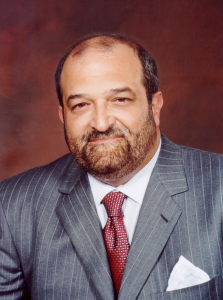Rochester Regional Health moves past milestone
By Matthew Liptak

The robotic surgery program at Rochester General moved past its 10,000th robotic surgery in the spring of this year and is well on its way toward 20,000 surgeries.
“I might not be there for the next 10 [thousand], but we’re well on our way to approach 20,000,” said physician John Valvo, 66, the program’s chief.
Valvo attributed the success of the robotics program at the hospital to the ingenuity of doctors and staff who are involved in the planning of the surgeries. Where once there were only a few procedures that could be used with the robots, now there are many.
“I think it’s basically a tribute to the men and women who committed themselves to learning the technology and developing the technology that may initially not have been designed specifically for certain procedures,” he said. “But the ingenuity of the surgeons and the surgical staff have allowed this to morph into a multidimensional approach.”
Originally the robots were developed for heart surgery, though not done in Rochester. Then it looked to be more capable in the realm of prostate surgery. Now the robots are used in surgeries related to bladder, kidney, ovarian, uterine, colorectal, lung and head and neck surgeries.
One of the main benefits of the minimally invasive robotic surgery is that patients tend to recuperate in a lot shorter time period. And it’s easier on the surgeon too.
“Quite frankly I think I like to be able to provide the patient with a state-of-art operation that gets them back into their daily life much quicker,” Valvo said. “From a personal perspective it makes surgery easier for me. Instead of standing for hours on end, I’m actually sitting in a very comfortable position performing this surgery.”
Valvo has done several thousand of the surgeries since Rochester Regional Health started doing them in 2004. He expects the program to become even more advanced, because Intuitive Surgical, the company that had a monopoly over creating the robotic instruments, will now have to compete with some other companies in the market.
“Right now there are multiple ports that are inserted into the abdomen to allow a surgeon to work,” he said. “Then next generation will allow these instruments to be inserted through a single port, and then expand out within the abdomen.”
There are also some other improvements he is looking forward to. Currently surgeons can see the surgical area in three dimensions with the robots, but they don’t have any tactile feedback — they can’t feel the patient’s body. Valvo expects that to change.
He also thinks, with increased competition, that the price and size of the robots will come down.
Rochester Regional has two surgical robotic systems. It has accomplished something of a standout achievement as being the only hospital in the United States with only two robots to have done over 10,000 surgeries, Valvo said.
“We’re kind of unique in that Rochester Regional Heatlh is probably the only hospital in the country, if not the world, that has accomplished that many procedures utilizing only two operative systems,” he said. “There are hospitals in major metropolitan areas that have exceeded 10,000, but only at the benefit of having several systems, not just two.”
Robotic surgical systems have proven a successful addition to medicine. They are not appropriate for every surgery yet, Valvo said, but they are expected to continue to evolve. They offer many patients a minimally-invasive option that can have them back on their feet sooner.
With new competition creating new systems for hospitals, and giving them more advanced options, the field may continue to progress rapidly. How will Rochester Regional’s 20,000th robotic surgery look as compared to its 10,000th? Time will tell.
But Valvo is confident the technology has shown its value as a part of modern medicine.
“I think robotic surgery is here to stay,” he said.
